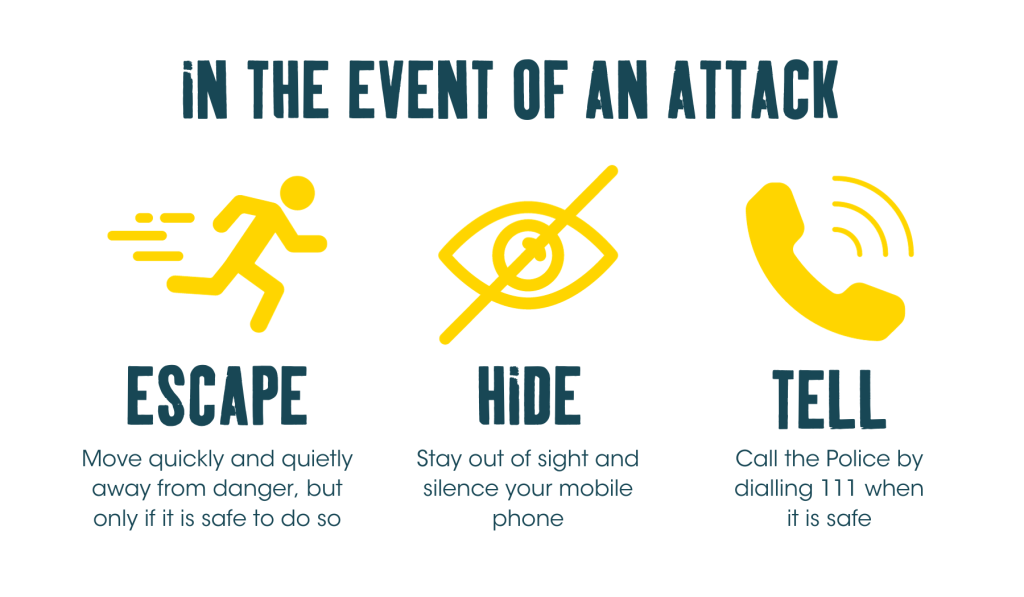Protecting Your Workplace: Crisis Preparedness and Response
Oct 25, 2023

Below you will find guidance on what to do in the event of an attack or site emergency involving an assault or an armed offender, including some practical advice on minimising the chances of an attack on-site.
Follow government guidelines:

Preparation ideas:
Check:
- Can someone freely walk into the workplace unchallenged?
- Check-in with workers during a Toolbox Talk about site security and what to do in the event of an attack.
- Does the site have CCTV, external and/or internal security lighting?
- Is there reception at the site to easily notify emergency services?
- Have you got two entrances? Ways to escape in an emergency?
Speak Up:
- Have there been any arguments or disagreements?
- Any known or suspected aggravation against worker/s?
- Let your site supervisor or police know if you have knowledge of any potential attack or threats to workers.
- Log any incidents or security breaches using the HazardCo App and if urgent, ensure your site supervisor is made aware immediately.
Ensure:
- Fences stay closed and secured when no one is present on-site. Keep sites closed from unauthorised entry during the day. Keeping fences shut can deter, hinder, or slow down potential attackers.
- Signage like CCTV in operation can deter potential spur-of-the-moment attackers.
- Bullying or arguments are not allowed to continue and are de-escalated immediately.
- Keep sites clear of debris or trip hazards to enable quick escape.
- No gang patches or visual displays of gang affiliation are allowed onsite.
- Site security is taken seriously not just for theft but worker safety.
- Workers on site are respectful of worksite neighbours, not being abusive or making unnecessary or excessive noise. Ensure workers follow council-allowed noise hours.
- Ensure valuables are kept secure and not left onsite overnight where possible.
Post-event
It’s important to be aware of Critical Incident Stress (CIS)
A “critical incident” is an event that can be so emotionally intense that it can be hard to handle using our usual ways of coping. These could include situations like a sudden death, serious injury, or a physical or psychological threat to the safety or well-being of an individual, workplace or community regardless of the type of incident.
Typical symptoms of Critical Incident Stress include:
- Restlessness
- Irritability
- Excessive Fatigue
- Sleep Disturbances
- Anxiety
- Startle Reactions
- Depression
- Moodiness
- Muscle Tremors
- Difficulties Concentrating
- Nightmares
- Vomiting
- Diarrhea
- Suspiciousness
Help your team recover
There are some techniques and professional assistance you can reach out for:
Informal debrief with peers post-event:
This can be done with supervisors, senior team members, or just work colleagues. Try and assess those team members who may need further support. Keep assistance within your training, and reassure colleagues that support is there for them with the provision of support numbers or how to access EAP services if available.
Employee Assistance Program (EAP)
EAP Services provides brief, solution focused support, to help workers deal with any difficulties they may be experiencing and to minimise the impact on their life. Counselling is available via video, over the phone or face to face. It’s important for employers to ensure that they have EAP services organised for their employees before an incident occurs.
Seek professional assistance to help you run a Crisis Management Briefing (CMB)
A Crisis Management Briefing (CMB) is one of the most highly utilised and versatile crisis intervention techniques. A CMB is a structured group meeting designed to provide information about the event.
Critical Incident Peer Support Groups use CMB’s as a way to share education about typical stress reactions and to provide information about basic stress management and coping techniques and resources.
Seek professional assistance and run a Critical Incident Stress Debriefing (CISD)
Following trauma exposure, an individual can experience multiple emotional, mental, and physical symptoms that impact their well-being. CISD is a practice that allows survivors to process and reflect on the traumatic events they’ve experienced and gain personal control over the incident.
For further support
Helplines that could be useful:
- Free call or text 1737 – any time, 24 hours a day. You’ll get to talk to (or text with) a trained counsellor.
- MATES in Construction 0800 111 315
- Lifeline (open 24/7) – 0800 543 354
- Depression Helpline (open 24/7) – 0800 111 757
- Healthline (open 24/7) – 0800 611 116
- Samaritans (open 24/7) – 0800 726 666
- Suicide Crisis Helpline (open 24/7) – 0508 828 865 (0508 TAUTOKO). This is a service for people who may be thinking about suicide, or those who are concerned about family or friends.
- Youthline (open 24/7) – 08 00 376 633. You can also text 234 for free between 8am and midnight, or email talk@youthline.co.nz.
- 0800 WHATSUP children’s helpline – phone 0800 9428 787 between 1pm and 10pm on weekdays and from 3pm to 10pm on weekends. Online chat is available from 7pm to 10pm every day.
- Kidsline (open 24/7) – 0800 543 754. This service is for children aged 5 to 18.












